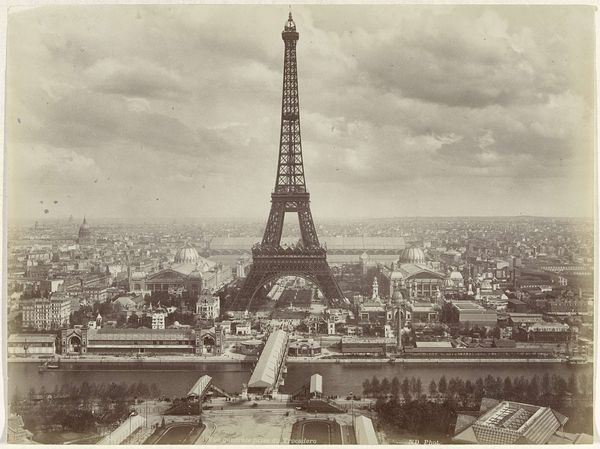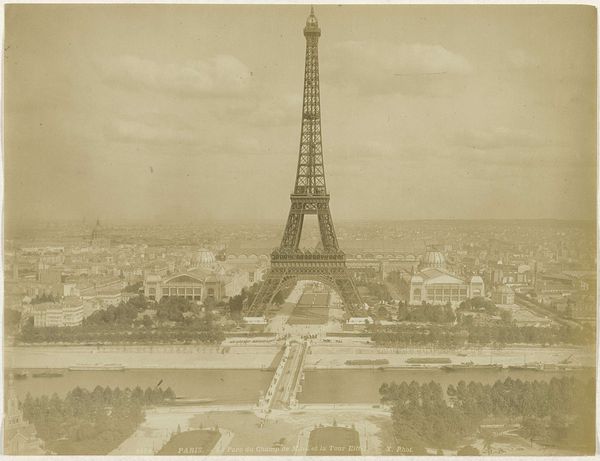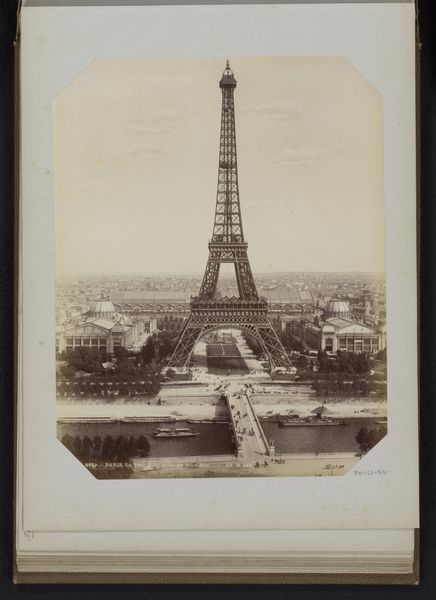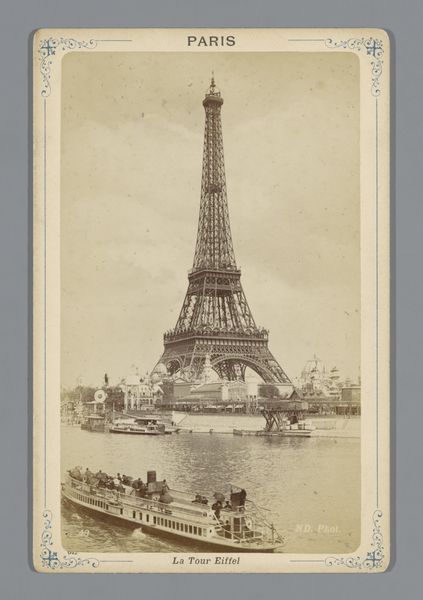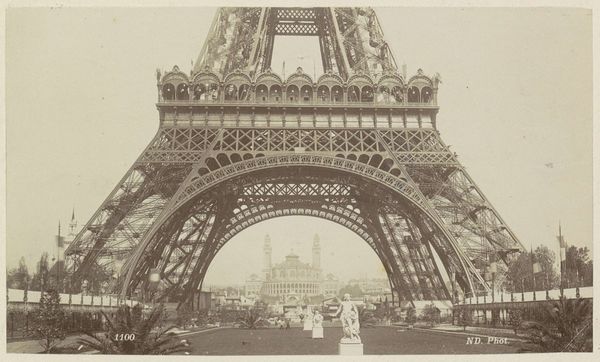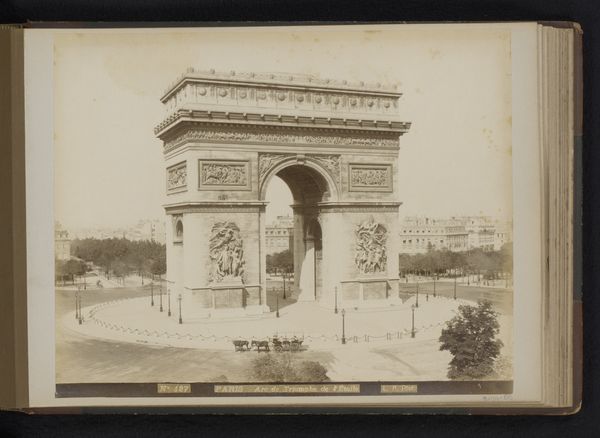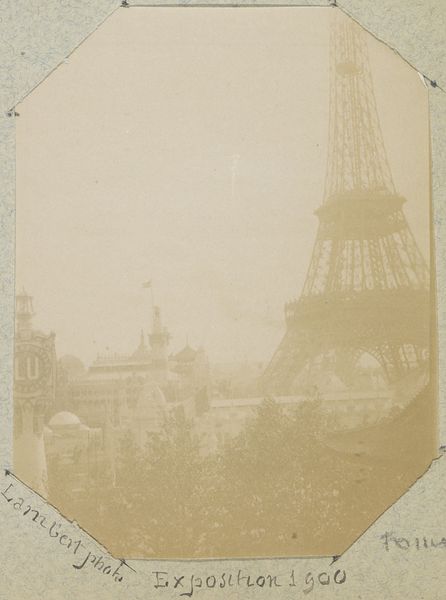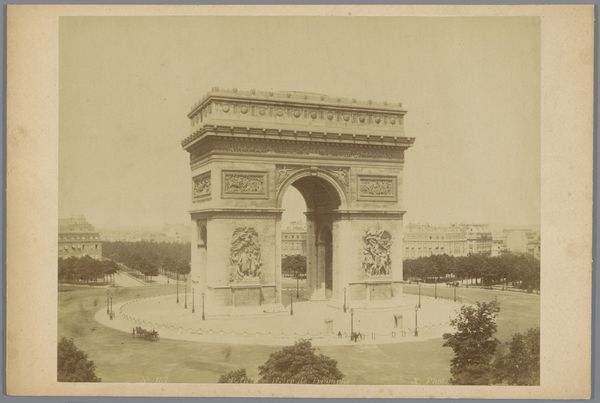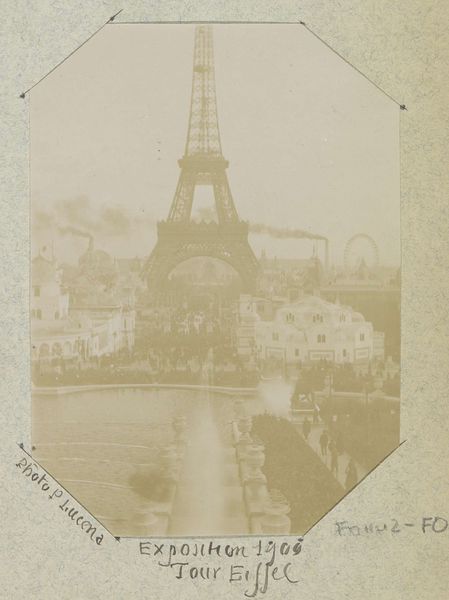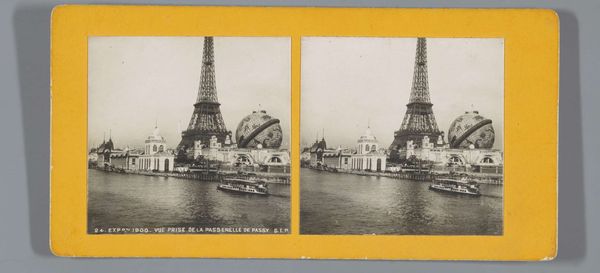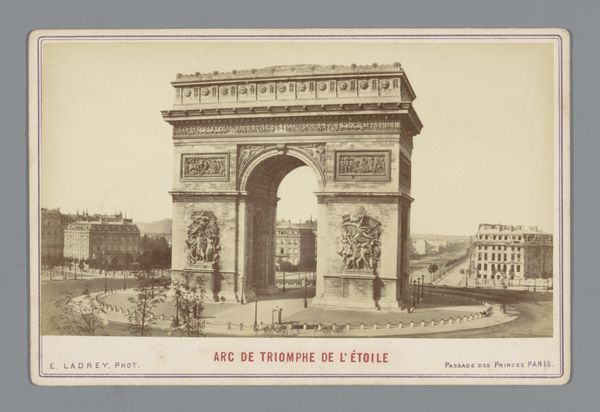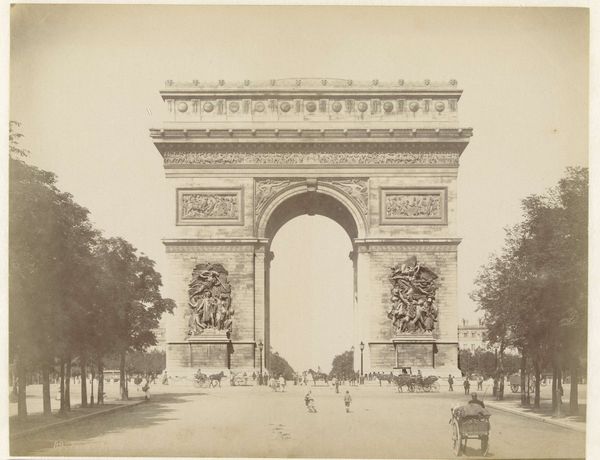
Dimensions: height 89 mm, width 140 mm
Copyright: Rijks Museum: Open Domain
Curator: So, we're looking at "Paris (XVe). - La Tour Eiffel" dating from 1912 by Léon & Lévy, rendered as a print, seemingly based on a watercolor. The subject, of course, is the Eiffel Tower dominating the Parisian skyline. Editor: Immediately, it evokes a kind of serene, almost melancholic feeling. The muted colors lend a dreamlike quality, don't you think? Like peering into a memory. And the sheer scale of the Tower contrasted against the delicate watercolor strokes... fascinating. Curator: The interesting thing to me is thinking about prints like this as a form of early mass media. Léon & Lévy were commercial photographers. This image isn't just art; it’s a commodity, distributed widely to shape perceptions of Paris as a modern, industrial capital, especially the focus on architecture. This romantic scene sells a certain dream about French modernism. Editor: Absolutely! I get a palpable sense of place and time – Paris just a little before the horrors of World War One. A slightly fragile beauty. It's amazing how a simple watercolour aesthetic creates such resonance. Look how the Ferris wheel to the right suggests a carefree entertainment of people against such formidable backdrop. Curator: The materiality tells a story too. Printmaking democratized art, but also industrialized it. This wasn’t unique art but an impression from other pieces reproduced into many to sell dreams and images. What we perceive here, then, is filtered through a chain of production and marketing. We can also note a difference in the depiction of water here which feels somehow unnatural given its otherwise loose style; I wonder, does that impact the work positively, negatively, or perhaps add another element to this early visual landscape? Editor: That little, almost overlooked detail, might well be what brings the whole thing together: highlighting this feeling between realism and imagination to the viewer. In a way it gives this an artificial allure for potential consumerist ideals through romantic views! It also serves like an anchor to connect our memories with that place. Curator: Food for thought, definitely. So, to reflect a bit further on the materiality – it encourages me to consider mass production. Editor: It reminds me of personal journeys, like postcards from a beautiful past.
Comments
No comments
Be the first to comment and join the conversation on the ultimate creative platform.
